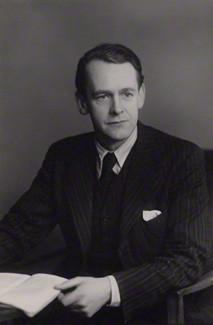Meredith Gwynne Evans facts for kids
Quick facts for kids
Meredith Gwynne Evans
|
|
|---|---|

Evans in 1949
|
|
| Born | 2 December 1904 |
| Died | 25 December 1952 (aged 48) |
| Alma mater | University of Manchester |
| Known for | transition state theory |
| Awards | Fellow of the Royal Society |
| Scientific career | |
| Institutions | University of Leeds Princeton University University of Manchester |
| Doctoral advisor | Arthur Lapworth |
| Doctoral students | Noel Hush George Porter Alec Sehon Huw O. Pritchard |
Meredith Gwynne Evans (born December 2, 1904 – died December 25, 1952) was a smart British scientist. He was a physical chemist, which means he studied how chemicals react. He came up with important ideas about how fast chemical reactions happen and how they work.
Along with two other scientists, Henry Eyring and Michael Polanyi, Meredith Gwynne Evans helped create the transition state theory. This is a big idea that explains how chemical reactions take place. He was also a Fellow of the Royal Society, a special honor for top scientists.
Early Life and School
Meredith Gwynne Evans was born in Atherton. This town is near Manchester, England. His birthday was December 2, 1904. His father, Frederick George Evans, was a school teacher. His mother was Margaretta Eleanora Williams. Meredith was the oldest of four children. He had two younger brothers and one sister.
He went to the same elementary school where his father was the head teacher. Later, he won a scholarship to Leigh Grammar School. He then studied at the University of Manchester. One of his brothers, A. G. Evans, also became a chemist. He even worked with Meredith for a while.
His Work as a Chemist
From 1929 to 1939, Evans worked as a lecturer at the University of Manchester. After that, he became a professor at the University of Leeds. One of his students there was George Porter. George Porter later won the Nobel Prize for Chemistry in 1967. He once said that Evans was the most brilliant chemist he had ever met.
Evans returned to the University of Manchester in 1949. In 1947, he was chosen to be a Fellow of the Royal Society. This is a very high honor for scientists in the United Kingdom.
Important Discoveries
At first, Evans studied how gases stick to certain minerals, like chabazite. But he soon became very interested in theoretical chemistry. This field uses ideas and math to understand how chemicals behave. He worked with other scientists, like Douglas Hartree and Lawrence Bragg. They used quantum mechanics to solve chemical problems. Quantum mechanics is a branch of physics that studies tiny particles like atoms and electrons.
In 1933, Evans received a special scholarship. He went to Princeton University in the United States. There, he worked with scientists like Hugh Taylor and Henry Eyring. When he came back to Manchester, he worked closely with Michael Polanyi. Together, they developed the transition state theory.
In 1935, two important papers were published. One was by Henry Eyring in Princeton. The other was by Michael Polanyi and Meredith Gwynne Evans in Manchester. Both papers introduced the main ideas of the transition state theory. They also came up with a special formula called the "Eyring equation." This equation helped scientists understand how fast chemical reactions happen. It opened up a whole new way to study chemical kinetics.
Later Life
Meredith Gwynne Evans passed away on December 25, 1952, in Manchester.
See also
- Chemical kinetics
- Transition state theory
- Eyring equation
- Henry Eyring
- Michael Polanyi

